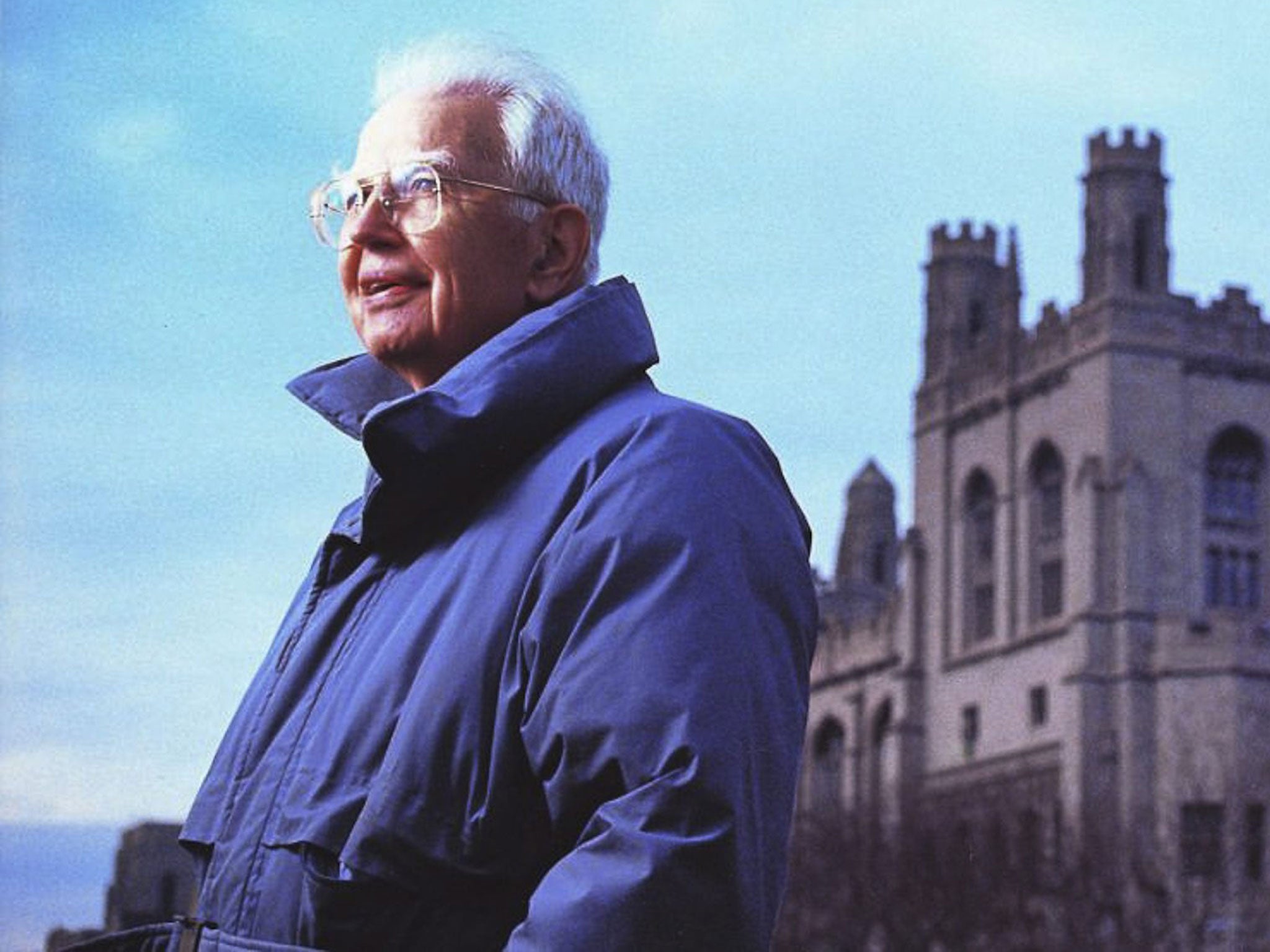Professor Ronald Coase: Economist who won the Nobel Prize

Ronald Coase, who received the 1991 Nobel Prize in economics for observations that expanded economics to include the law and broadened legal theory to encompass the "dismal science", was one of the most influential economists in generations. He said he became a economist through a "series of accidents" and for years seemed destined for a respectable but not remarkable career. Only later did other economists and legal philosophers, as well as judges and government regulators, fully realise the importance of the theories he had begun developing years before.
"I was then 21 years of age and the sun never ceased to shine," he said in his Nobel lecture, referring to a talk he that became the basis for his influential essay "The Nature of the Firm". "I could never have imagined that these ideas would become some 60 years later a major justification for the award of a Nobel Prize. And it is a strange experience to be praised in my eighties for work I did in my twenties."
"The Nature of the Firm" (1937) sought to explain how and why firms exist. "The Problem of Social Cost" (1960) laid out a theory for managing societal ills caused by industry, such as pollution. The works wove together economics and the law and summoned academics and policymakers to consider the marketplace in novel ways.
Coase began his research for "The Nature of the Firm" as a student at the London School of Economics, who gave him a scholarship to travel to the US to study American industries. He wanted to know why certain industries, such as the car industry, feature only a few major corporate players while others have numerous small-scale firms. His answer lay in "transaction costs", including the time and expense of hiring personnel, acquiring raw materials and marketing.
Some companies believe in controlling all steps in the production chain: Ford once bought a rubber plantation rather than rely on a contractor for tyres. But in the internet era many firms have found contracting to be more cost-effective; in making that calculation, they are wittingly or unwittingly relying on Coase's insights.
By the late 1950s, Coase had fully moved to the US. In 1958 he stunned leading economists when he submitted a paper, "The Federal Communications Commission", to the University of Chicago economics department. He argued that in fields such as broadcasting the government could create a new marketplace by granting tradable rights for goods such as radio frequencies.
Aaron Director, founder of the Journal of Law and Economics, which Coase would later lead, invited Coase to the University of Chicago to defend his thesis before 21 thinkers, including Milton Friedman and George Stigler, who held a fundamentally different view of government's role in society. The economists initially voted 20 to 1 against Coase, but in a few hours he persuaded all to join his camp.
Coase elaborated on his ideas in The Problem of Social Cost (1960), a seminal work on the relationship between government and the marketplace. He argued that the market could be trusted to sort out environmental and other disputes without excessive government intervention. For example, initiatives such as cap-and-trade permits might control pollution as efficiently as government regulation and enforcement. Because of the forward-looking nature of such ideas, Coase's work remained relevant until the end of his life. He co-wrote How China Became Capitalist the year he turned 101.
The Nobel committee honoured him for the "discovery and clarification of the significance of transaction costs and property rights for the institutional structure and functioning of the economy." Coase said, "My contribution to economics has been to urge the inclusion in our analysis of features of the economic system so obvious that ... they have tended to be overlooked."
He was born in 1910, in Willesden, north London, the son of post office workers. As a boy he had to wear leg braces and attended what he described as a "school for physical defectives" before moving to a mainstream secondary school; his frailty pushed him away from sports and toward academics. At the LSE he studied under the noted economist Arnold Plant and during the Second World War he was a statistician in the war cabinet. He settled in the US in 1951 and taught at institutions including the University of Virginia before joining the University of Chicago in 1964.
He remarked on the tendency of ideas to move in and out of favour. "A scholar must be content with the knowledge that what is false in what he says will soon be exposed and, as for what is true, he can count on ultimately seeing it accepted, if only he lives long enough." At 102 he was the oldest-living Nobel laureate.
Ronald Harry Coase, economist: born 29 December 1910; Nobel Prize for Economics 1991; married 1937 Marian Hartung (died 2012); died Chicago 2 September 2013.
Subscribe to Independent Premium to bookmark this article
Want to bookmark your favourite articles and stories to read or reference later? Start your Independent Premium subscription today.

Join our commenting forum
Join thought-provoking conversations, follow other Independent readers and see their replies